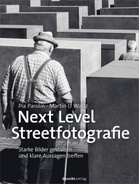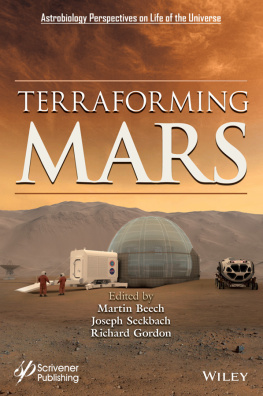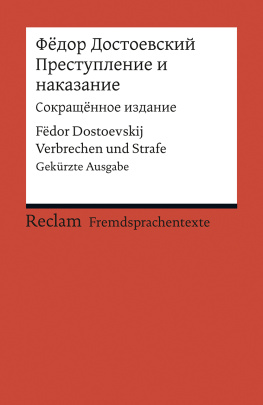Urban Planning and the Pursuit of Happiness
EUROPEAN VARIATIONS ON A UNIVERSAL THEME (18th21ST CENTURIES)



SHAPES OF HAPINESS
Planning Concepts and their Manifestations in Urban Form
Arnold Bartetzky
Marc Schalenberg
The pursuit of happiness can be considered a universal concern, taking on a wide variety of forms. It has meant different things in different places and at different times. In this way, it possesses a cultural and intellectual history. In the Western tradition, the belief that we can attain happiness through our own efforts can be traced back at least to ancient Greek times.
Just one step further leads on to the idea that people not only can be happy, but that they should be happythat they are destined for happiness in this life and thereby have a natural right to it. Thus, in the second half of the eighteenth century, the issue of happiness and its fulfilment as a human right became central to philosophical and political reflections all over Europe. In the United States of America, it even gained entry into the 1776 Declaration of Independence.
If happiness on earth is considered to be the natural destiny of mankind, an obvious conclusion would be that it is not primarily personal misfortunes and incapacities that cause people to fail in their pursuit(s) of happiness, but the inadequacy of their living conditions. Let us change the living conditionsis the logical consequence of this assumptionand people will invariably be happy.
Architecture and urban planning have played a prominent role in concepts aiming to achieve happiness by means of changing living conditions. Do cities not shape the everyday environment of the majority of the population? Their architecture forms a space that clearly has a bearing on the way people feel on a daily basis. As Wolfgang Pehnt puts it, life welcomes us in an architectural setting and bids us farewell in an architectural setting. Urban projects have often been conceived and staged as model islands, in anticipation of a bright(er) future for a city, a country, or even the whole of humanity.
This volume explores the ideas, discourses and images attached to the city as a space for the creation of public happiness. It does not aim to provide an archaeology of happiness, nor a proper conceptual history of the termalthough the essays collected here do pay tribute to the rhetorical strategies surrounding urban planning. Rather, its aim is to analyse how happiness was a manifest issue in projects and reflections associated with the built environment, or indeed in the promotional campaigns surrounding new urban developments.
The phenomenon in question, in our view, required neither professionalised urban planning nor the explicit vocabulary of happiness, This is implied just as much by terms such as ideal city, well-policed space, public sphere, new homes, et cetera. Besides, both top-down and bottom-up activities are to be considered equally as attempts at pursuing and promising happiness: as prescriptive notions, defined by the authorities for urban planning, and as appropriations of urban space, possibly running contrary to the original intentions. Rather than focussing on a narrow time scale or geographical area, and with no handbook pretensions, we have opted for a wide spectrum of thorough case studies in both the conception and reality of town planning. Although some reference to the Americas is made, the geographical scope of the volume is deliberately centred on Europe, breaking some of the common academic communication boundaries: Eastern Europe meets Western Europe, the Baltic Sea meets the Mediterranean, and the remodelling and extension of existing cities is juxtaposed with the creation of new ones, all with regard to what can beor indeed has beendescribed as a pursuit of happiness. This brings a wide range of disciplines and research agendas together, notably architectural and political history, sociology and geography, literature and anthropology. While the articles are arranged in a chronological sequence, they also invite comparisons to be made over longer periods of time. On a morphological level, one might find striking analogies between the early modern predilections for radial grids of long, wide, linear streets and the similar patterns found in socialist towns of the Stalin era. The geometrical furore applied to the creation of urban space, wide open squares and a strategic positioning of politically central points de vue pervade Baroque and totalitarian aesthetics in a similar fashion, as do the pathetic effects of the stone materials employed. But conversely, are curved streets and detached houses made of glass necessarily an indicator of a democratic regime? Obviously not. Urban form and building substances are important aspects for the interpretation of planning; however historical contextualisation is called for if all too easy conclusions are to be avoided.
The starting point of this volume is the age of Enlightenment. Just as the idea of public happiness on earth originated in the Enlightenment, the idea that rationally planned urban space should pave the way towards this goal emerged at the same time. It is true that, since antiquity, there had been various conceptions of the ideal city on earth, linked with attempts to create the perfect space for urban living. The Italian Renaissance in particular showed a predilection for the citt ideale designed on the basis of rationalisation and the aesthetic unification of urban space. The importance of controlling and defending a city was accentuated by the sixteenth-, seventeenth-, and early eighteenth-century fortress towns such as Palmanova, Neuf-Brisach, or Mannheim, which strictly adhered to geometrical patterns.
A special mention within the context of this volume should be given to the Northern German fortress town of Glckstadt (literally: happiness city, or city of fortune), founded by the Danish king Christian IV in 1617 on the Elbe estuary as a hugely supported counterweight to nearby Hamburg. In its political function as well as in its layout, promising prosperous living conditions to its citizens, who were religious refugees of various creeds, this fortress city represents a princely-planned social and urban model, in a way that was paradigmatic for early modern European ambitions. Still, pre-Enlightenment conceptions of ideal cities were not based on the idea of general happiness for the residents in a modern sense, but on visions of a hierarchic order with the divine or worldly power in a dominant position. Even in the case of Glckstadt, the optimistic name seems to have referred more to the personal fortune of the founder and the hope of success for the project than to the future prospects of the inhabitants. This shall succeed, this must succeed. Therefore the city shall be named Glckstadt! (Dat schall glcken un dat mutt glcken, un denn schall se ok Glckstadt heten!), as the Danish king is said to have uttered upon undertaking the hazardous business of building the city in wild open countryside.
Even in the eighteenth century, the scheme of order decreed from above remains central to the conception of a city. However, from this time onwards it becomes more and more intrinsically linked with the purpose of common well-being. Like other contemporary thinkers and officials adhering to cameralism, the German Enlightenment author Johann Peter Willebrand considered the state of order, regulation and systematisation achieved by a well-organised, authoritarian government and obedient subjects to be a vital precondition for the common
Next page












